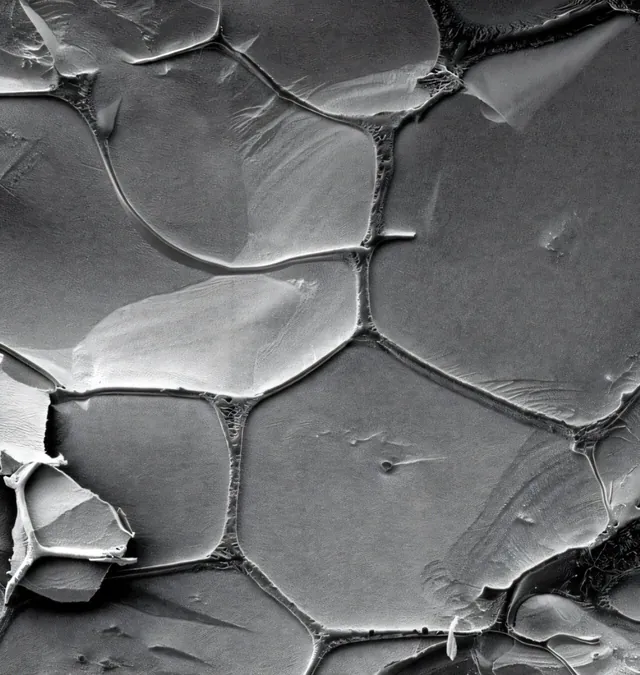
Unlocking the Secrets of Early Earth: How RNA Could Have Jumpstarted Life
2025-05-28
Author: Mei
Chemists Break New Ground in RNA Self-Replication
In a groundbreaking study from UCL and the MRC Laboratory of Molecular Biology, scientists have unearthed clues about how RNA (ribonucleic acid) might have replicated itself during Earth’s primordial days—a crucial step in the origin of life on our planet.
It’s theorized that the earliest life forms relied on strands of RNA to carry and replicate genetic information before DNA and proteins took the evolutionary stage. However, replicating RNA in a lab setting that mimics early Earth conditions has proven incredibly challenging.
The Double Helix Dilemma
Typically, RNA strands fold into a double helix structure, akin to Velcro, making them sticky and resistant to separation. This unique structure can thwart replication, as it doesn’t allow time for the copying process to occur.
A Triplet Solution
The research team tackled this problem using three-letter "triplet" RNA building blocks mixed in water—with careful additions of acid and heat to pry apart the double helix. Once separated, they froze the solution, creating gaps where the triplet building blocks could intervene.
In these liquid pockets between ice crystals, the triplet blocks encased the RNA strands, preventing them from re-sticking together. This innovative technique allowed them to replicate effectively.
Nature’s Cycle of Life: Thawing and Replicating
By thawing the solution and repeating the cycle, the research team observed that changes in pH and temperature—conditions likely prevalent in nature—enabled continuous RNA replication. The strands produced were even long enough to serve a biological function.
Chasing the RNA Origin of Life
Dr. Philipp Holliger, who spearheaded the study, notes that the movement from mere chemistry to biological life hinges on information encoded in genetic material, which must be replicated to pass on to subsequent generations.
Lead author Dr. James Attwater emphasized that replication is fundamental to understanding our existence. Yet, a significant gap remains in identifying the very first replicator, with the ancestor of all known life, LUCA (Last Universal Common Ancestor), exhibiting more complexity than originally postulated.
Nature's Chemistry: A Glimpse into Early Life
While the researchers primarily focused on the chemistry, the conditions created in the lab could closely resemble environments found in freshwater ponds or geothermal settings where heated rocks encounter cooler air.
They noted, however, that such RNA replication wouldn’t occur in saltwater—salt disrupts the freezing process, preventing the concentration of RNA building blocks necessary for successful replication.
The Bigger Picture of Life's Origins
Life’s origins likely stem from more than just RNA alone; a combination of RNA, peptides (amino acid chains), enzymes, and lipids that form barriers played a significant role in this complex puzzle.
Researchers at UCL and the MRC Laboratory of Molecular Biology continue to unveil the intricate storyline of life's beginnings. Recent research led by Dr. John Sutherland and Professor Matthew Powner is shedding light on how simple molecules prevalent on early Earth could lead to the creation of key components, including nucleotides, amino acids, peptides, and even essential vitamins.
As these discoveries unfold, the mystery of how life emerged from the serendipitous dance of basic chemistry on the primitive Earth grows ever more fascinating.

 Brasil (PT)
Brasil (PT)
 Canada (EN)
Canada (EN)
 Chile (ES)
Chile (ES)
 Česko (CS)
Česko (CS)
 대한민국 (KO)
대한민국 (KO)
 España (ES)
España (ES)
 France (FR)
France (FR)
 Hong Kong (EN)
Hong Kong (EN)
 Italia (IT)
Italia (IT)
 日本 (JA)
日本 (JA)
 Magyarország (HU)
Magyarország (HU)
 Norge (NO)
Norge (NO)
 Polska (PL)
Polska (PL)
 Schweiz (DE)
Schweiz (DE)
 Singapore (EN)
Singapore (EN)
 Sverige (SV)
Sverige (SV)
 Suomi (FI)
Suomi (FI)
 Türkiye (TR)
Türkiye (TR)
 الإمارات العربية المتحدة (AR)
الإمارات العربية المتحدة (AR)